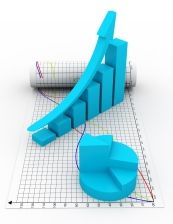How Often Should I Trade?
 If you’re a day trader (or swing trader or even investor) you’ve probably asked yourself, or someone else, a similar question– “How often should I trade?”
If you’re a day trader (or swing trader or even investor) you’ve probably asked yourself, or someone else, a similar question– “How often should I trade?”
Trading too much can erase your edge in the market place, and highlight other problems such as lack of discipline or poorly defined trading strategies. Trading too little means missed opportunities and can highlight other issues such as lack of confidence, untested methods or even undercapitalization. To determine how often we should trade we need to address our personal circumstance and personality. Following that, we can than tackle some issues we may be facing in regards to how much we trade.
How Often You Trade Will Fluctuate
Before you decide how much to trade, there are a couple things to keep in mind:
- How much you trade will change each day, based on market conditions. Some days simply produce more trade signals than other days. Not every day is identical. Most days I make at least a one or two trades, but other days I may have fifteen if there is a lot going on.
- Avoid setting goals such “As I will only take two trades per day” or “I will make a minimum of five trades per day.” Some days there are more opportunities, and some days there are less.
Define a System
The amount you trade will fluctuate each day based on the amount of trade signals the market generates. This means you must first define the signals which will trigger trades.
Placing a trade isn’t a random occurrence where you just jump into a trade because you think you can make a quick buck. Instead, trading should be approached in a methodical manner. Each trade should be based on a tested idea, which you have written down and defined as a strategy. The strategy should contain information on how and why you enter trades, position sizing, trade management, risk management and how you get out of trades.
Ultimately all these elements must come together to produce an edge, which hopefully over time will produce a profit in your trading account.
Once this strategy is defined, only trades which match the strategy entry criteria (and pass other trade filters which may be used) are taken. Since the market acts a bit different every day, each day will produce a different number of signals.
Analyzing the Strategy and Yourself
If you are taking lots of trades which are random in nature with no defined plan, the odds of overall trading success are extremely low. Take the time to test out and practice some strategies. Then work on only trading those signals.
The same goes for if you are only take the odd trade, but are trying to wait for everything to be perfect. Even the best looking trade can be a loser. So this is poor approach as well. Don’t fall into the trap of thinking that you can pick only the winning trades. Learn a strategy, and then trade all the signals. Don’t try to outwit the strategy—it won’t work.
Here are some common problems, as well as some “fixes,” for if you have a strategy but can’t seem to follow it.
- Skipping trade signals: This is very common. Traders have a strategy but don’t take all the signals it generates. This can cause a big discrepancy between what the strategy is likely to produce in terms of profit, and what it actually produces. As mentioned prior, we can’t try to outwit our trading strategies. Take all the signals to get the benefits of the strategy.
Skipping trades can also be caused by a lack of confidence in the strategy being used. If this is the case, get in a demo account and relentlessly trade that signal every time you see it. If it is a good strategy you will see good results, and this should give the confidence to use the strategy with real money and take the signals.
- Taking more trades than the strategy dictates: Another major issue is taking “random” trades based on impulse, over and above the signals provided by the strategy. These extra trades are usually based on completely untested trading methods, and over the long run will typically lose more money than they make.
If you are having this problem, write down every down, every day, how much you make and lose on these trades. Over time you’ll see how much these trades are hurting your profitability. That may provide some incentive to stop doing it. Also, practice mindfulness. In real-time accept that you are having an urge to make a random trade, and talk yourself through. Take your hands off the mouse/keyboard and let the urge pass. By practicing this and staying in the moment, eventually the urge to make these random trades will pass.
Final Word
Before you can know how much to trade, you need to learn or create a strategy. That strategy tells you when to entry trades and ultimately how often you will trade. The number of trades will vary by day, because the market will generate a different number of trade signals each day–some days you may have none, other days you may have a ton.
Trade the signals based on the tested strategy. Don’t take more than that, and don’t take less than that. Your only goal as a trader is to follow your strategy precisely, and to practice until you can.